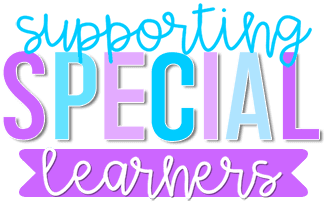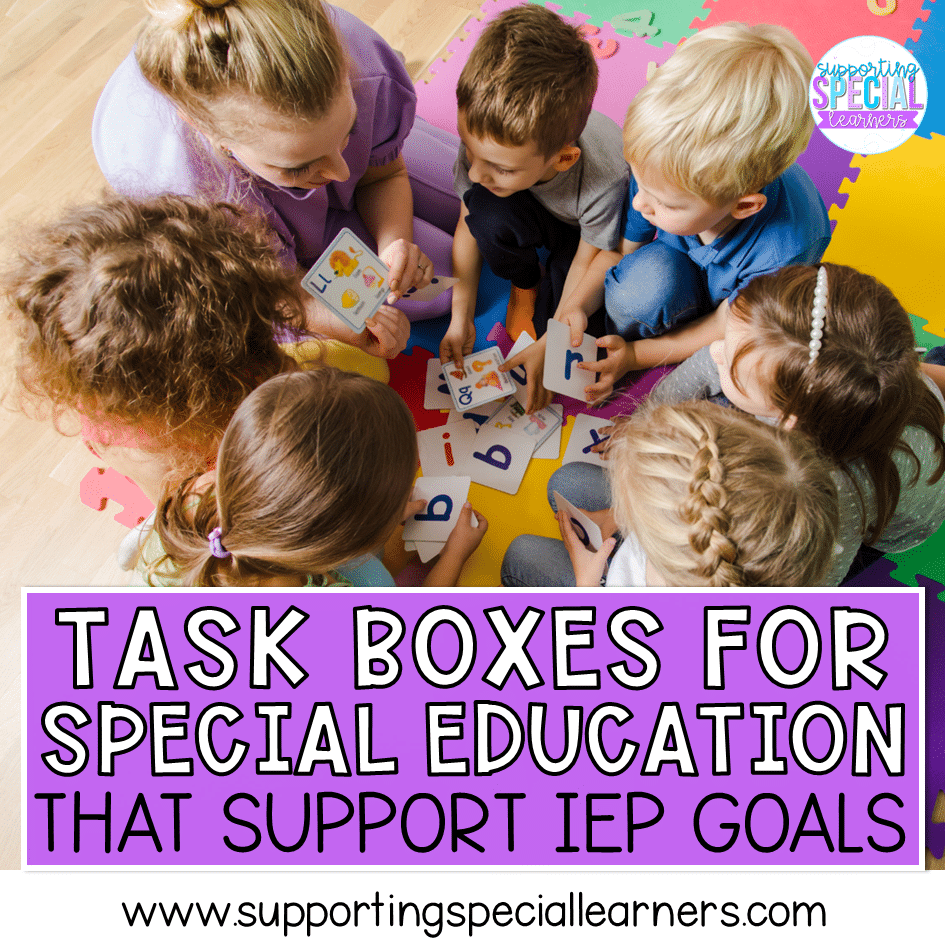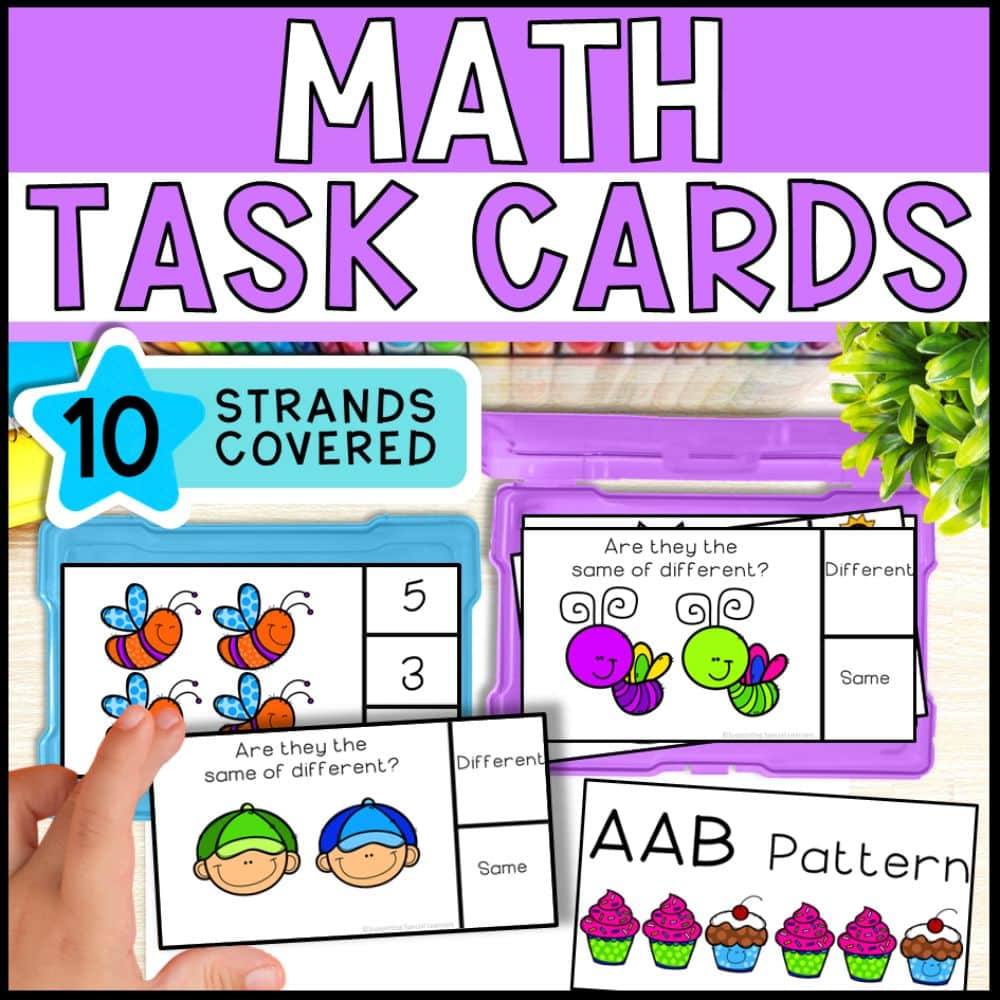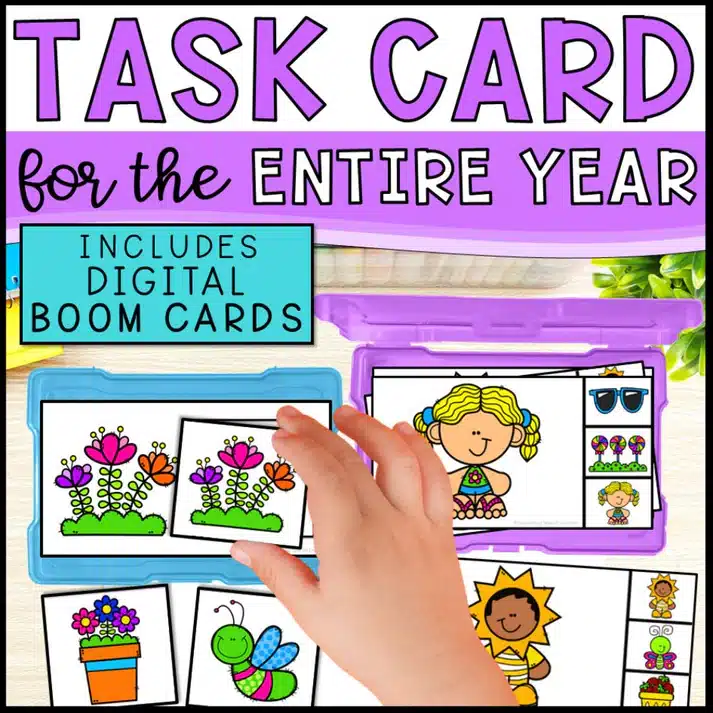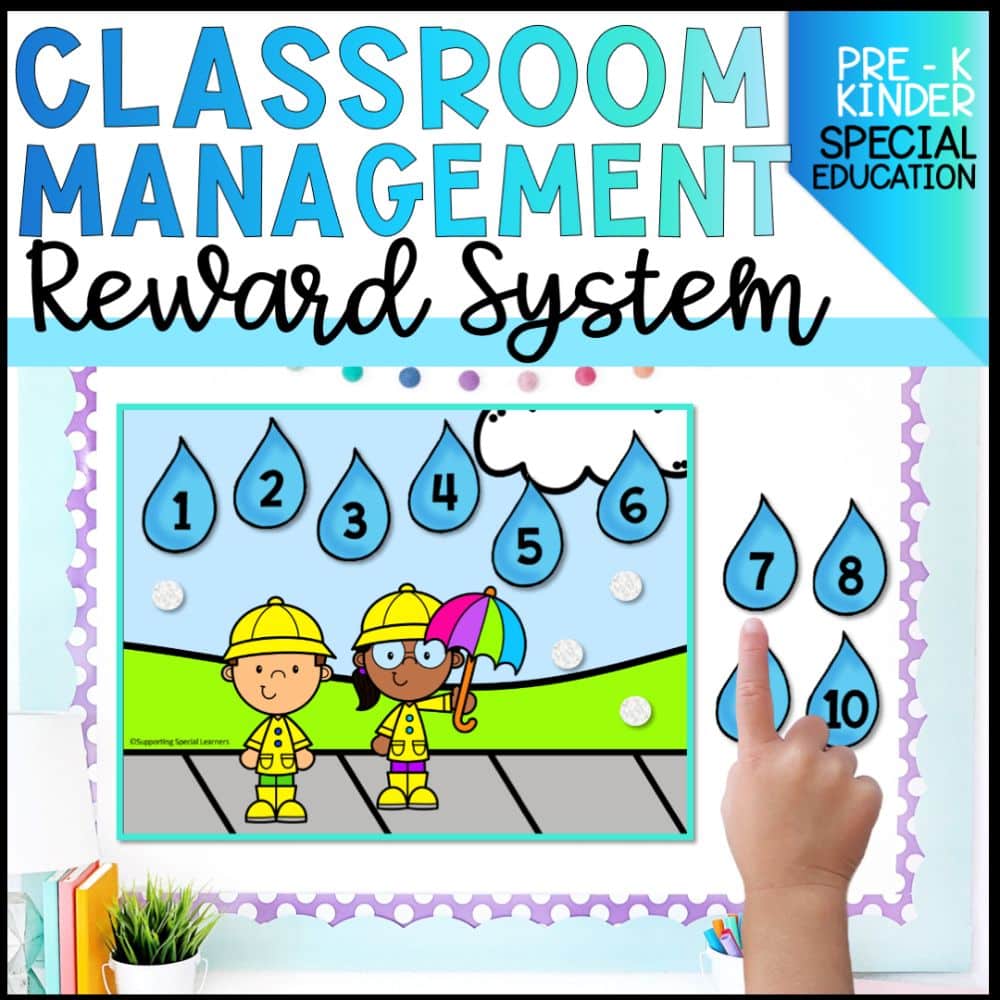- Understanding Task Boxes for Special Education
- Designing Effective Task Boxes for Special Education
- Implementing Task Boxes in the Classroom
- Enhancing Learning Through Task Boxes
- Ideas for Task Boxes
- Challenges and Solutions in Using Task Boxes
- Resources and Support for Task Box Implementation
- Conclusion
- Frequently Asked Questions
Task boxes are like little treasure chests of learning for kids in special education. They give students a chance to work on important skills like math, reading, and social learning in a way that feels simple and doable. Each box includes short, focused activities that help students build confidence while practicing what they need most. Teachers can easily switch out tasks or adjust them to match each student’s goals. When used consistently, task boxes support independence and help turn tricky skills into daily wins.
Key Takeaways
- Task boxes are tools that support various learning objectives in special education.
- They promote independent learning by allowing students to work at their own pace.
- Task boxes can be customized to align with individual education plans (IEPs).
- Integrating task boxes into daily routines can improve student engagement and motivation.
- Creative themes and technology can enhance the effectiveness of task boxes.
Understanding Task Boxes for Special Education
Definition and Purpose of Task Boxes
Task boxes are essentially small containers filled with activities designed to teach or reinforce specific skills. These boxes can cover anything from math and literacy to social skills and fine motor development. The main goal is to provide students with opportunities to practice and master skills independently. It’s like having a mini lesson in a box, ready to go whenever the student is.
Types of Task Boxes Available
There’s a variety of task boxes out there, each built to support different educational needs:
- Math Task Boxes: Focus on numbers, counting, sorting, and pattern recognition. They might include counting bears, number puzzles, or matching games.
- Literacy Task Boxes: These include activities like letter matching, word building, and reading comprehension.
- Fine Motor Skill Task Boxes: Designed to improve hand-eye coordination and dexterity, these might involve threading beads, cutting shapes, or using tweezers to sort items.
Benefits of Using Task Boxes
Task boxes bring a lot to the table in special education settings:
- Promote Independence: Students can work on these tasks with minimal help, boosting their confidence and self-reliance.
- Structured Learning: Each box is designed with a specific learning goal, making it easy to track progress and adapt to individual needs.
- Engagement: By using colorful and interactive materials, task boxes keep students interested and motivated to learn.
Task boxes go beyond basic skill practice. They support student growth by promoting independence, confidence, and consistent progress. With structured activities and a clear purpose, they serve as a reliable tool for meeting individual learning needs in special education classrooms.
Designing Effective Task Boxes for Special Education
Key Elements of a Successful Task Box
Creating a successful task box requires a thoughtful approach. The key is to align the activities with the student’s individual learning goals. Start by identifying the skills that need development, such as counting, sorting, or matching. Then, choose materials that are engaging and suitable for the student’s age and ability. Here are some elements to consider:
- Clarity: Ensure instructions are simple and easy to understand.
- Engagement: Use colorful and tactile materials to capture interest.
- Adaptability: Make sure the task can be adjusted for different skill levels.
Incorporating IEP Goals into Task Boxes
Individualized Education Program (IEP) goals are crucial in special education. Task boxes can be tailored to meet these specific objectives. Begin by reviewing each student’s IEP to identify target skills. Then, design tasks that directly address these goals. For example, if a student needs to improve fine motor skills, include activities like threading beads or using tweezers to pick up small objects.
Customizing Task Boxes for Individual Needs
Every student is unique, and their learning tools should reflect that. Customizing task boxes involves understanding each student’s preferences and challenges. Consider using different themes and formats to keep students engaged. For instance, a student interested in animals might enjoy sorting animal figures, while another might prefer puzzles or building blocks. It’s also helpful to rotate tasks regularly to maintain interest and motivation.
Designing task boxes is like crafting a personalized learning journey. It’s about finding the right balance between challenge and fun, ensuring each student can learn at their own pace while enjoying the process.
Using these strategies can make task boxes even more effective in a special education setting. Simple routines, clear visuals, and student choice can all help improve focus and make independent work time more successful.
Implementing Task Boxes in the Classroom
Setting Up a Task Box System
Creating an effective task box system in the classroom isn’t as hard as it sounds. Start by organizing your materials. You need clear, labeled storage for each task box so students can easily find and return them. Think about using sturdy containers that are easy to stack or store on shelves. Next, decide on a schedule for using the task boxes. Designate specific times during the day when students will work with these boxes, allowing them to get used to the routine. A simple rotation system can ensure all students get a turn with different task boxes, keeping things fresh and interesting.
Integrating Task Boxes into Daily Routines
Incorporating task boxes into daily routines can make them an integral part of learning, rather than just an add-on. Here’s how you can do it:
- Morning Warm-Up: Use task boxes as a morning activity to get students engaged and ready to learn.
- Transition Times: Employ them during transitions between subjects to keep students focused and productive.
- Free Choice Time: Allow students to choose task boxes during free choice periods, giving them a sense of autonomy.
Monitoring Progress with Task Boxes
Keeping track of student progress with task boxes is key to understanding their development. Create a simple checklist or chart where you can note each student’s progress. Observing how students interact with the task boxes can provide insights into their strengths and areas needing improvement. Regularly update these records to adapt the task boxes to better suit each student’s needs.
Task boxes can show you how each student learns best. Watching how a student works through a task gives you insight into what they understand and where they might need support. This helps you adjust your teaching to better match their needs.
In conclusion, implementing task boxes in the classroom requires thoughtful organization and integration into daily routines. With a bit of planning, these tools can significantly enhance the learning experience for students in special education settings.
Enhancing Learning Through Task Boxes
Promoting Independent Learning
Task boxes are like little packets of independence for students. They allow kids to work on their own, giving them a chance to feel confident and take charge of their learning. By working at their own pace, students can tackle challenges without feeling rushed or pressured. This independence is crucial for building self-esteem and encouraging a sense of accomplishment.
Developing Fine Motor Skills
Fine motor skills are essential for everyday tasks, and task boxes can be a fun way to develop these skills. Activities might include:
- Threading beads on a string
- Sorting small objects with tweezers
- Assembling puzzles with small pieces
These tasks not only improve dexterity but also help with hand-eye coordination, which is vital for writing and other academic activities.
Encouraging Social Interaction
Task boxes can also be a great tool for social learning. While many tasks are designed for individual work, they can be adapted for group activities. This encourages:
- Sharing and turn-taking
- Communication and collaboration
- Building friendships through shared experiences
Using task boxes in group settings can help students learn how to work together, solve problems as a team, and support each other’s learning journey.
Ideas for Task Boxes
Creative Task Box Themes
Themed task boxes can help hold student interest and make activities feel fresh. Try picking themes that match what students are curious about or what’s happening during the season. A space theme might include sorting planets or matching stars, while a farm theme could focus on animals or crops. Simple themes like these can make learning feel more fun and familiar.
- Space Adventure: Activities about planets, stars, and astronauts.
- Farm Fun: Tasks involving farm animals, crops, and machinery.
- Under the Sea: Explore marine life and oceanic features.
Using Technology in Task Boxes
Integrating technology into task boxes can enhance learning experiences. You can incorporate tablets or computers with educational apps that complement the physical tasks. For instance, a math task box could have an app that provides interactive math problems. This combination not only aids learning but also prepares students for a tech-driven world.
- Use tablets for interactive learning games.
- Include QR codes that link to educational videos.
- Employ apps for practicing skills like spelling or arithmetic.
Seasonal and Holiday Task Box Ideas
Aligning task boxes with seasons or holidays can keep the activities fresh and exciting. During winter, you might have a “Winter Wonderland” box with tasks about snow and ice. For Halloween, a “Spooky Skills” box could include counting candy or matching spooky shapes.
- Winter Wonderland: Snowflake counting, ice-themed puzzles.
- Spooky Skills: Halloween-themed sorting or matching.
- Spring Blossoms: Activities focused on flowers and growth.
Task boxes do more than help students finish a task. They can spark curiosity and make learning feel fresh and fun. With the right mix of themes, tech tools, and seasonal ideas, task boxes can help turn your classroom into a space where students are excited to learn.
By incorporating these Special Education Task Boxes, educators can enhance early reading, writing, and math skills through engaging activities. These resources are perfect for diverse learning needs, making them ideal for special education settings.
Challenges and Solutions in Using Task Boxes
Overcoming Common Obstacles
When you’re working with task boxes in special education, you might run into a few bumps along the way. One of the biggest hurdles is keeping students engaged over time. It’s easy for them to lose interest if the activities become too predictable or repetitive. To tackle this, regularly switch up the tasks and introduce new themes or challenges. Another common issue is the initial setup. It can be time-consuming to organize and prepare all the materials, but once you’ve got a system in place, it becomes more manageable. Finally, ensuring the tasks align with each student’s individual goals can be tricky. It requires ongoing assessment and adjustment to meet their unique needs.
Adapting Task Boxes for Different Learning Styles
Every student learns differently, and task boxes need to reflect that. Here’s a quick list of ways to adapt task boxes for various learning styles:
- Visual Learners: Use bright colors, pictures, and diagrams to make the tasks more visually appealing.
- Auditory Learners: Include tasks that incorporate sounds or require verbal instructions.
- Kinesthetic Learners: Design tasks that involve movement or hands-on activities.
When you match task boxes to each student’s learning style, the activities become more meaningful and easier to understand.
Ensuring Engagement and Motivation
Keeping students motivated can be a challenge, but it’s crucial for their success. One way to boost engagement is by incorporating engaging matching activities that are both fun and educational. Also, consider setting up a reward system where students earn points or small prizes for completing tasks. This not only encourages them to participate but also helps build a sense of accomplishment. Regularly ask for feedback from the students about the activities they enjoy the most and try to incorporate their preferences into future tasks.
Task boxes work best when you’re willing to adjust and try new ideas. When you plan for challenges and stay flexible, it’s easier to keep students interested and learning every day.
Resources and Support for Task Box Implementation
Joining Task Box Communities
Joining a task box community can give teachers new ideas and helpful support. These groups are often bustling with ideas, support, and shared experiences. You can find communities both online and offline. Online platforms offer forums and social media groups where teachers exchange tips and tricks. Joining these can provide you with fresh ideas and solutions to common challenges. Offline, local teacher meet-ups or professional development workshops can be equally valuable. Being part of a community not only enriches your resource pool but also connects you with like-minded professionals.
Accessing Online Task Box Libraries
Online task box libraries can be a helpful place to find new ideas and ready-to-use materials. Many websites offer free or low-cost resources that cover a wide range of skills, from early math to fine motor tasks. Exploring these libraries can save you planning time and help you keep your classroom activities fresh and useful throughout the year.
Professional Development Opportunities
Professional development is key to effectively implementing task boxes. Workshops and training sessions can introduce you to new techniques and strategies. These opportunities are often available through educational conferences, local school districts, or online courses. Participating in these can help you stay updated with the latest trends and best practices in special education.
“By tapping into these resources and support systems, educators can significantly enhance their teaching methods and better meet the needs of their students.”
In summary, leveraging these resources and support systems can greatly aid in the effective implementation of task boxes in special education settings. Whether through community engagement, online libraries, or professional growth opportunities, educators have numerous avenues to explore and enrich their teaching approaches.
If you’re ready to start using task boxes in your classroom, we have helpful tools to make it easier. Visit our website to find simple, ready-to-use resources that support student learning and independence. Don’t miss out on the chance to enhance your learning environment!
Conclusion
Task boxes can make a real difference in special education classrooms. They are not just about learning skills. They help students work independently, build confidence, and feel successful with tasks that match their needs. Whether it is counting, sorting, reading, or practicing fine motor skills, these boxes provide clear, structured activities that support real growth.
They fit easily into daily routines. You can use them during morning work, centers, transitions, or quiet time. You do not need a complex setup. What matters is choosing tasks that match your students’ goals and rotating them often to keep things interesting.
If you are looking for a simple way to support learning while building independence, task boxes are a strong option. With a bit of planning, they can become one of the most helpful tools in your classroom.
Frequently Asked Questions
What are task boxes?
Task boxes are sets of activities or tasks designed to help students practice and learn skills independently. They are often used in special education to support learning.
How do task boxes help special education students?
Task boxes promote independent learning, enhance fine motor skills, and provide a structured way for students to practice different skills at their own pace.
Can task boxes be customized for individual needs?
Yes, task boxes can be tailored to meet the unique needs of each student, aligning with their IEP goals and focusing on specific skills they need to work on.
What types of activities are included in task boxes?
Task boxes can include a wide range of activities, from basic math and language exercises to puzzles and sensory tasks, all designed to target specific learning objectives.
How can teachers implement task boxes in the classroom?
Teachers can set up a system where students use task boxes during independent work times, rotating activities regularly to keep students engaged and challenged.
Are there resources available for teachers to create task boxes?
Yes, there are many resources available online, including task box libraries and communities where teachers can find ideas and materials to create effective task boxes.
